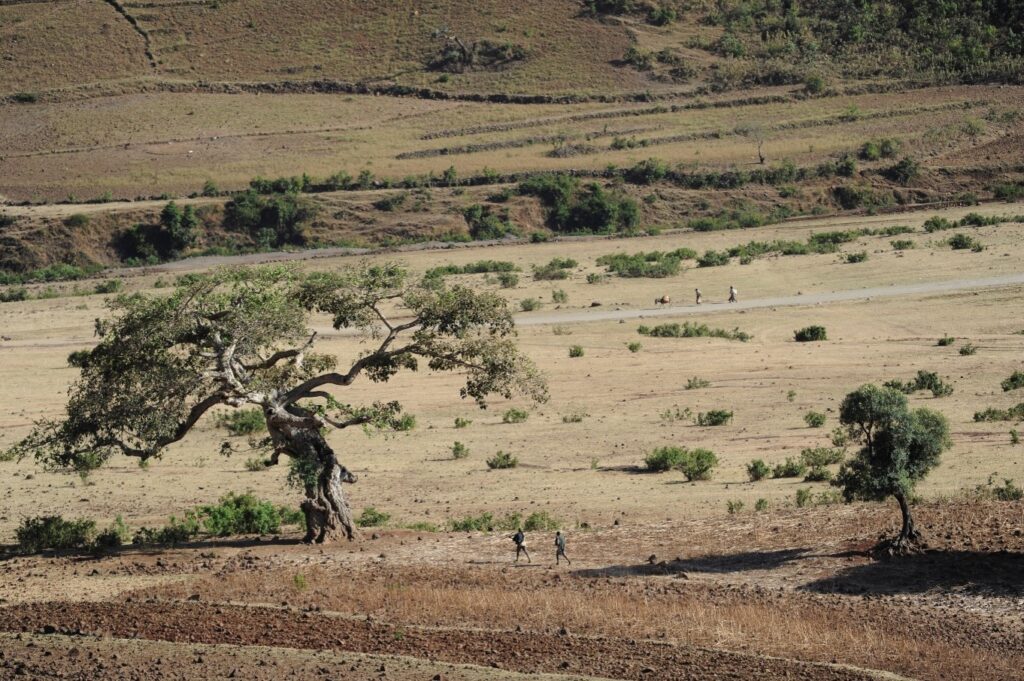Drought in Ethiopia
Downloads
Tasks
- Describe the main problems caused by climate change in Ethiopia.
- Explain the social, cultural and economic impacts on the people of Ethiopia.
- Explain why the situation in Ethiopia is an example of climate justice issues.
- Discuss who is responsible for supporting this country and give reasons for your opinion.

Ethiopia, an East African country with around 115 million inhabitants. The Horn of Africa region, which includes Ethiopia, is suffering from a severe drought due to climate change that is affecting millions of people. In some regions, it has not rained for several years.
100 years ago, 40 per cent of Ethiopia was still forested, which corresponds to almost half of the country. Since then, the population has grown considerably and extreme weather events have increased, meaning that food security is no longer guaranteed. Forests have been cleared to make room for agricultural land to feed the population and combat hunger. A speciality of Ethiopia are the 800-year-old church forests that surround the numerous churches and monasteries in the north of the country. These forests are home to indigenous tree species and serve as a habitat for various animal and bird species. They fulfil important ecological functions and also have cultural and religious significance. Despite their importance, these church forests are also increasingly under threat as the local population is forced to cut down trees and sell the wood due to food shortages. Dependence on agriculture combined with the effects of climate change is exacerbating the situation for many people in Ethiopia, as rainfall is becoming increasingly scarce.
The people of Ethiopia are already suffering from the consequences of climate change, to which other countries are making a major contribution.
In 2022, carbon dioxide (CO₂) emissions in Ethiopia averaged around 0.15 tonnes per inhabitant. In a global comparison, the average value is around 4.66 tonnes per capita.
